Narra Tree (Pterocarpus Indicus) Profile: Facts, Uses & Care Guide
Written by Maggie
Dec 23 2021
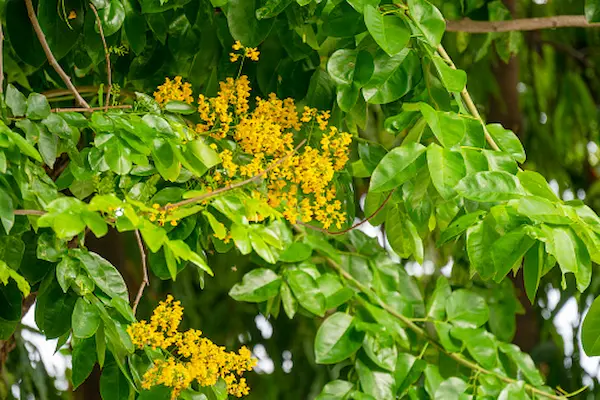
Narra Tree, scientific name Pterocarpus Indicus, is a tree, 15-25 m tall, diameter at breast height up to 40 cm in sloping forests or cultivated in gardens. It is also found in India, Philippines, Indonesia and Myanmar. Narra tree often grows in sloping forests or is cultivated in gardens. Narra tree has hard and dense wood, red hearthwood, for excellent construction, Musical Instruments and furniture materials; Resin and wood are for medicinal purposes.
Narra Tree Picture
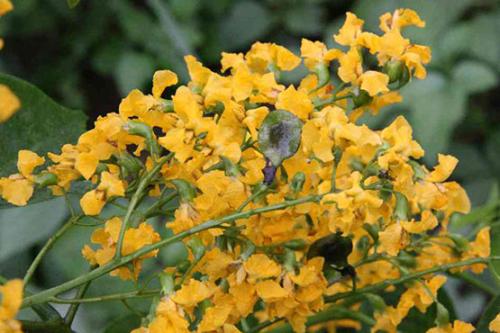
Characteristics of Narra Tree
Narra (Pterocarpus indicus) is a tree, 15-25 m tall, diameter at breast height up to 40 cm; The bark is grey. Pinnately compound leaves are 15-30 cm long; Stipules are caducous; Leaflets are 3-5 pairs, ovate, 6-11 x 4-5 cm, apex acuminate, base rounded, glabrous on both sides, veins slender. Panicles are terminal or axillary, many flowered, brown pubescent; Pedicels are 7 -- 10 mm long, apical with 2 linear, easily detached bracteoles; The calyx is campanulate, slightly curved, ca. 5 mm long, calyx teeth broadly triangular, ca. 1 mm long, apex rounded, brownish hairy; The corolla is yellow, petal long stalk, margin corrugate, flag 10-13 mm wide; Narra Tree has 10 stamens, monomer, finally divided into 5+5 disomy; The ovary is short stipitate densely pilose. The pod is rounded, flat, oblique, ca. 5 cm wide, slightly hairy and reticulated to the seed part, surrounded by broad wings up to 2 cm wide, with 1 to 2 seeds. narra tree flowering period is in spring.
Narra Tree Quick Info
| Botanical/Scientific Name | Pterocarpus Indicus |
| Common Name | Angsana, Sena |
| Uses | Cabinetry, cartwheels, carving, construction, furniture, and musical instruments |
| Origin | Asia and Africa |
| Light Care | Full sun |
| Soil Care | Sandy soil |
| Temperature Care | From 22°C to 32°C |
| Humidity Care | Moisture-retentive soil |
| Watering | Water once every three days |
| Pruning Care | Cutting 3-6 months |
| Fertilizer Care | Applying soil fertilizer for improving tree growth |
| Propagation | Be propagated by seeds and cuttings |
| Toxic | Non toxic |
| Flower Color | Golden-yellow |
Narra Tree Ecological Habits
Narra Tree (Pterocarpus indicus) is mainly distributed in China, Taiwan, Guangdong and Yunnan (southern). It is also found in India, Philippines, Indonesia and Myanmar.
In sloping forests or cultivated in gardens. narra trees have strong adaptability to the environment, not demanding soil, gravel soil, coastal sand soil, and even containing a certain amount of salt soil can grow well. Its root system developed, with nodules, can nitrogen fixation; Narra Tree likes strong light, and has fast growth and strong regeneration.
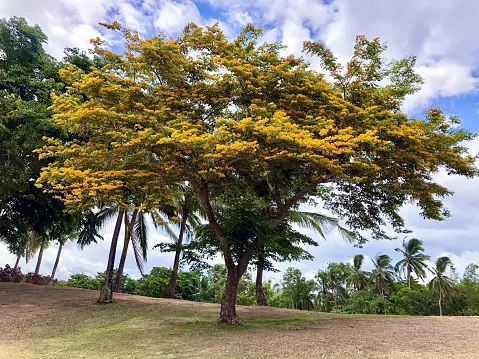
When to Plant Narra Tree
Narra tree can be planted from March to May. The root system of Narra tree can fix nitrogen. It is not strict with the soil. It is best to provide loose, breathable and fertile soil. It likes the sun very much. It should be kept in a sunny place and exposed to plenty of sunshine. Watering should be timely. During the growth period, it should be watered about twice a week, each time thoroughly. Narra tree does not have a high demand for fertilizer, and Bika water-soluble fertilizer is applied every two months. The suitable growth temperature is 20-30 ℃, and it shall be maintained indoors in winter.
When does Narra Tree Bloom
The flowering period of narra tree is in spring, about April and May. The flowering period is very short, only one or two days. If you miss it, you can only wait another year.
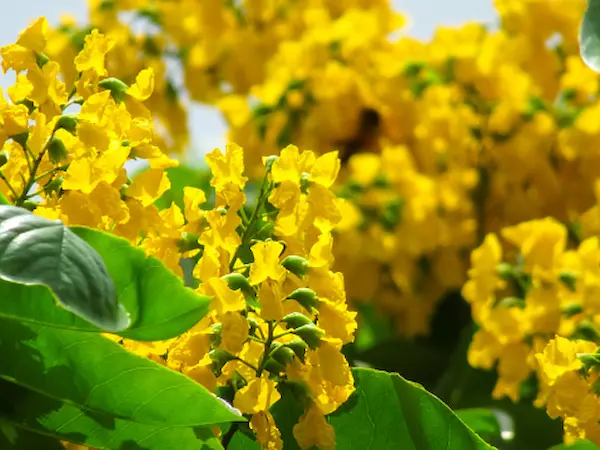
How to Care for Narra Tree
Narra Tree Watering
Narra tree likes to be wet, so it should be watered a little more frequently. Under normal circumstances, it is necessary to water every two to three days. If the water is not enough, the growth of plants will be limited. Don't start from the top of narra tree, be sure to pour it in the basin soil. Watering in summer should be done in the morning or evening. Watering at noon will make the water lose quickly. The newly purchased narra tree is generally not watered, but it needs to be watered thoroughly after changing the basin.
The roots of narra tree are generally developed, so its requirements for soil quality are not high, but there can be no ponding in the basin and excessive watering is not allowed, but the frequency of watering once every two or three days should be maintained.
Soil for Narra Tree
Narra tree does not have high requirements for soil. It can grow well in most of the soil. It is best to choose loose soil for planting at ordinary times.
Narra Tree Light Requirements
Narra tree likes to grow in an environment with sufficient light. During maintenance, it needs to be placed in a place with good outdoor lighting for maintenance. We're going to put narra tree in a sunny place. Many potted plants we like to place in the room or in front of the desk without direct sunlight. For sun loving plants, it's like people who can't eat. They will slowly "starve" to death. We should place the narra tree potted plants on a sunny balcony to ensure that the potted plants have enough sunlight.
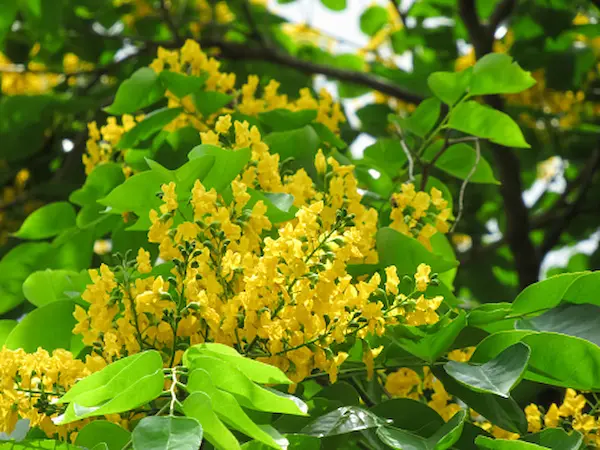
Narra Tree Temperature Care
Narra tree grows in winter. The indoor temperature should not be lower than 3 ℃. If it can reach between 20 ℃ and 30 ℃, it prefers this growth temperature.
Narra Tree Humidity Care
Narra tree likes a humid growth environment. During normal maintenance, it is necessary to keep the soil slightly wet. If Narra tree is planted indoors, due to the lack of indoor light, relatively low humidity and slow air flow, sometimes there may be too much dust, resulting in poor air quality, which is not conducive to the growth of narra tree. So you should change the position of the pot occasionally. However, it is mainly not to be too frequent, so as not to make narra tree unsuitable.
Fertilizer for Narra Tree
Narra tree does not have high requirements for fertilizer, and the number and amount of fertilization should also not be too frequent. Drop the plant nutrient solution into the water spray tank at an interval of one or two months, shake it evenly, and pour it on the soil. Different in spring and winter, when applying fertilizer, do not bury nutrient soil in the deep soil of the plant, especially when narra tree has lush branches and leaves, its roots have gone deep into the soil or potted plants. Excessive fertilization will not only lead to yellowing of leaves, but also damage to plant roots. Narra tree has developed roots and nodules, can fix nitrogen, and does not have strict requirements on soil, but fertile land and sufficient sunshine should be selected for high-yield forest.

Narra Tree Pruning
Narra tree should grow naturally from March to May, and then prune narra tree after a period of time, so as to accumulate nutrients. Similarly, the branches and buds with strong growth potential can be pruned, and the weak branches and buds can be cut less or not.
The mature narra tree also needs to be trimmed frequently in order to keep its bonsai shape unchanged. This can not only maintain its original shape, but also make appropriate changes to make it more beautiful.
Generally speaking, all crossed, parallel and wheel-shaped branches and some unsightly branches need to be trimmed, and the diseased branches must be cut off. The inch dense branches and leaves can be thinned appropriately to facilitate ventilation and light transmission.
However, no matter how to prune Narra tree, we must be careful. The growth of narra tree is extremely slow. It can not become a timber for hundreds of years, so it is very precious.
Narra Tree Repotting
Generally, Narra tree repotting is in spring and autumn, that is, in the autumn when red sandalwood sprouts and grows, it is better to change pots. If the pots are changed out of season, the mud ball brought by narra tree potted plants cannot be dispersed, and it is best not to disperse it in other seasons, because almost all the fibrous roots of lobular red sandalwood are in the mud ball, and scattering is equivalent to removing all the active roots.
Of course, if the root system decays and the basin is changed, it is another matter. We need to change the soil and the basin. At this time, we need to wash the soil, trim the root system, disinfect and then put it into the basin. At this time, we need to trim some leaves of the tree to reduce evaporation.
After we repotting Narra tree, we must not expose it to the sun after pouring the root fixing water thoroughly. We should put it in a cool and ventilated place for slow seedling maintenance. Do nothing during slow seedling maintenance. The basin soil is dry and wet. The basin soil is dry, which is conducive to root development. Generally, the slow seedling maintenance should be delayed for about 20 days. Of course, it is normal to have leaf wilting at this time, When you see the leaves begin to show their spirit, you can move them out for normal maintenance.
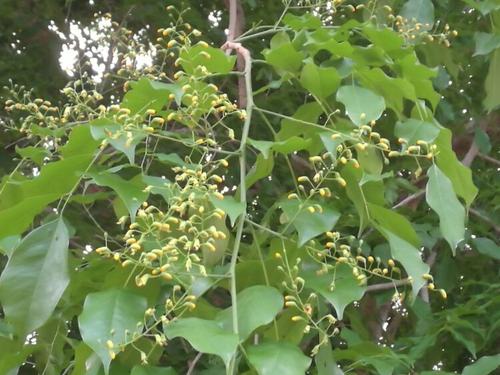
How to Propagate Narra Tree
Narra Tree Propagation from Seed
By sowing propagation Narra Tree roots will be more developed, the ability to resist the wind will be strong, branches and leaves will be more lush.
Narra tree breeding propagation is to use the intersection of male and female pollination to form seeds to reproduce offspring. Generally, this method is used for reproduction. Not only a large number of seeds can produce more new seedlings. Narra tree seedlings propagated by seeds have developed roots, strong wind resistance, lush branches and leaves, and colorful forms of vitality. They can grow and become useful year by year. However, this kind of tree usually blooms and bears fruit after more than ten years of planting.
Narra Tree Cutting Propagation
The robust branches are cut and inserted into the seedbed. The cutting operation is very convenient, but the wind resistance of Narra Tree is very weak.
The plant can carry out narra tree cutting propagation, cut flowers, stems and leaves and insert them into the seedbed to make them grow into a complete plant. This method is called cutting. The materials used for cutting (roots, stems and leaves) are called cuttings.
The advantage of Narra tree cutting propagation is that the branches are easy to come and cheap, which solves the urgent need of greening. The disadvantage is that its root system is spreading all around and cannot form a vertical downward main root;
Therefore, the wind resistance is poor. In order to prevent typhoons, part or all of the branches are cut down every year to become bald and decapitated trees. The branches are cut down year after year, which not only affects the growth of the tree, but also affects the tree shape and appearance.
Read More:
How to Propagate Narra Tree
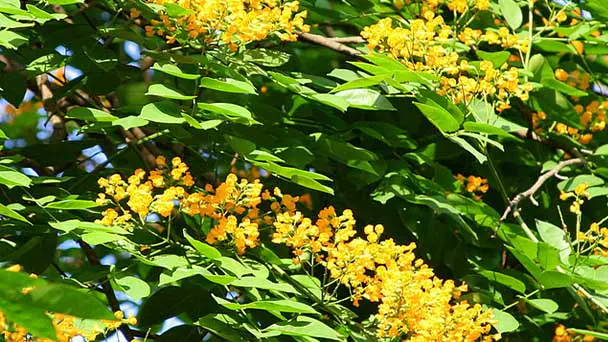
Narra Tree common diseases
In Narra Tree (Pterocarpus indicus) seedlings, it will appear nevus or anthrax, will harm the leaves and branches, etc. I is found that it is suffering from disease after the timely removal of sick branches and leaves, and burned, and then sprayed with agents, so as not to cause secondary infection.
Narra Tree Uses
Watch
Narra Tree canopy extension, dark green, beautiful, is an excellent garden greening tree species.
Industrial
Narra Tree wood is hard and dense with red hearthwood, making it an excellent wood for construction, Musical Instruments and furniture.
Medicinal
Resin and wood are used for medicinal purposes.
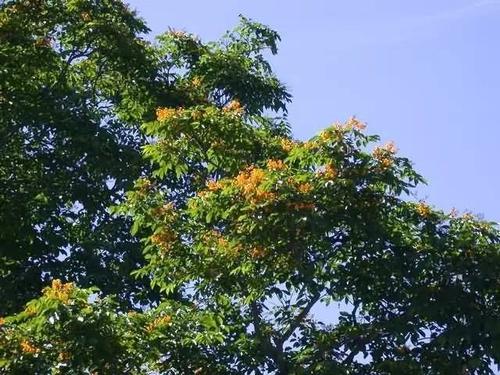
Latest Updated
- Benefits of Bugleweed - 7 Science-backed Health Benefits
- Bugleweed Dangers & Side Effects - Is It Poisonous?
- How to Plant Evergreen Trees - What You Should Know
- When to Plant Evergreens - Grow Guide for Evergreen Trees
- 12 Wonderful Evergreen Shrubs for Your Garden
- 12 Popular Evergreen Plants with Pictures for Beginners
- When And How To Prune A Lilac Bush Like a Pro
- How to Grow & Care for Lilac Vine (Hardenbergia Violacea)
- Japanese Lilac Tree (Syringa Reticulata) Care & Propagation Guide
- Shumard Oak Pros and Cons - What to Know
Popular Articles
- Winter maintenance of Antirrhinum Majus
- How to Grow Terminalia Mantaly Tree
- How to Grow and Care for Crossostephium Chinense
- How to grow Antirrhinum Majus in spring
- Peristeria Elata (Dove Orchid) Profile: Info & Care Guide
- Underwatered Snake Plant (Sansevieria Trifasciata) - Signs And How To Fix
- How to Care for Brazilian Jasmine Plant (Mandevilla Sanderi)
- How to Grow & Care for Graptopetalum Purple Delight in Summer
- Rosa Chinensis (China Rose): Plant Growing & Care Tips
- How to Care for Baby Sun Rose (Aptenia Cordifolia)